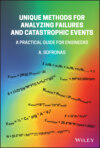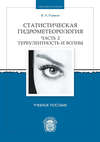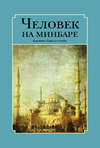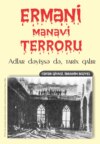Czytaj książkę: «Armenian Acts of Cultural Terrorism»
PREFACE
It is a fact that the most important factor which enables nations to last out, is their cultural identity. It goes down in history that a nation's failure to hold on to its cultural values tenaciously would lead to a total frustration. As pointed out by one writer, 'If we shoot bullets through our past, a cannonade by our future generations is next to come.' Therefore, in order to succeed in living up to standards of a dignified life, one has to protect, maintain, and transmit his cultural heritage, which in turn builds a bridge between the past and the future.
Regrettably, even around the turn of the century, terrorism remains a grim fact. It is excruciating to witness innocent people falling victims to terrorism. However, what is more dangerous and utterly unpardonable is cultural terrorism. Fighting, plundering and arson have long been canonized as glorifying forms of action by some nations therefore it has been highly pertinent, in their view, to obliterate the cultural artifacts belonging to their adversaries which survived over centuries. Most probably, history will not excuse those nations that are committed to prove their dignity by destroying the cultural monuments of other civilizations.
Dear readers,
in its attempt to shed light on the question What is cultural terrorism?, this book constitutes a striking piece of document presented to the world public. You will be petrified to read about the cultural genocide exercised vigorously over Azerbaijani Turks by Armenian propagandists who unjustly misinform the world by spreading erroneous claims of ethnic genocide -alleged mass killings of Armenians in Ottoman Turkey in 1915. It will raise a twinge of conscience to find out in this book that Armenian invaders who, with savage ferocity, eradicated the works of art embroidered with traditional and moral values could not abide even Turkish place names. One wonders how rational it is to merely feel sorry and have pangs of conscience for this. In that case, what should be done? We should explain the facts to the whole world, and especially to the international organizations that are supportive of the protection and maintenance of cultural monuments; and we should do so with full perseverance. We must and shall explain the undisputed facts despite those who present their lies to the whole world as the truth and who regrettably find thoroughly unjust and condoning supporters. I do not think we have any other options. None at all. This is a duty that should not be assigned exclusively to Azerbaijan. All the external institutions and organizations that believe in this rightful and honorable mission of Azerbaijani Turks' are also expected to garner support and contribute their best.
The historic Azerbaijani mission is pivotal indeed. Even though we are a republic that proclaimed its independence not long ago, we have been in history for an in proportionately long time. Our voice goes back in time echoing around centuries. Sooner or later, we shall verify our rightful mission as well as our pride and dignity before the entire world. I do not have the slightest doubt about it. However, in order to achieve our ultimate goal, it is crucial to understand and explain this mission well, and set ourselves to work diligently on it.











